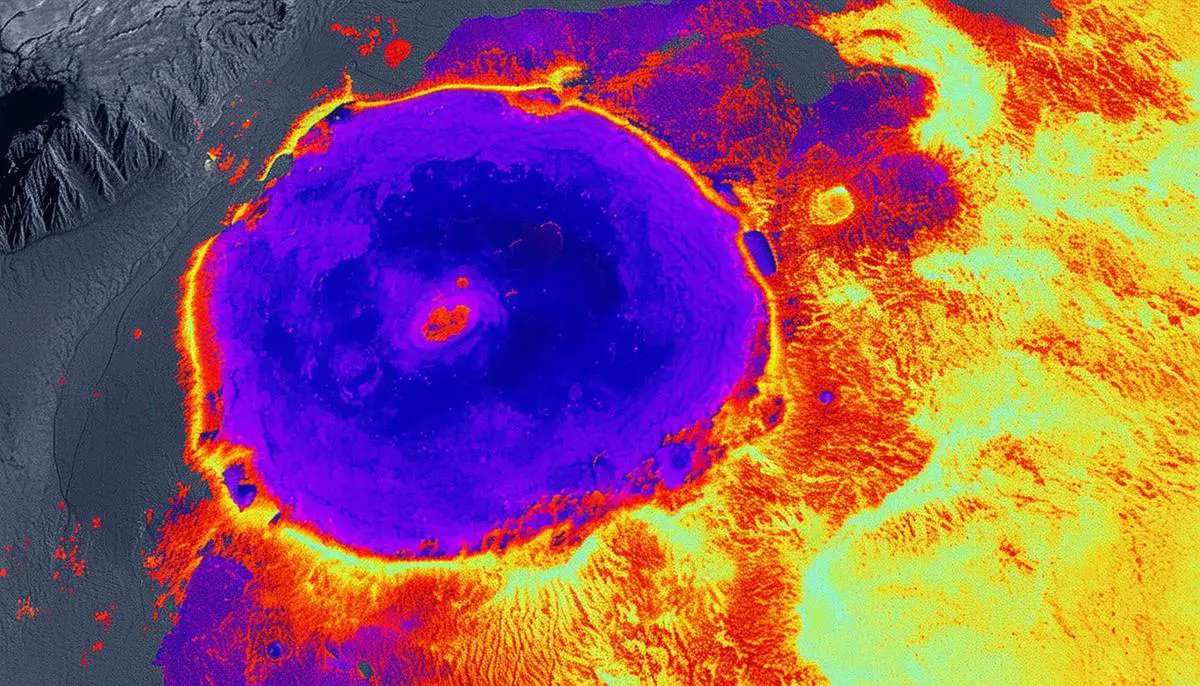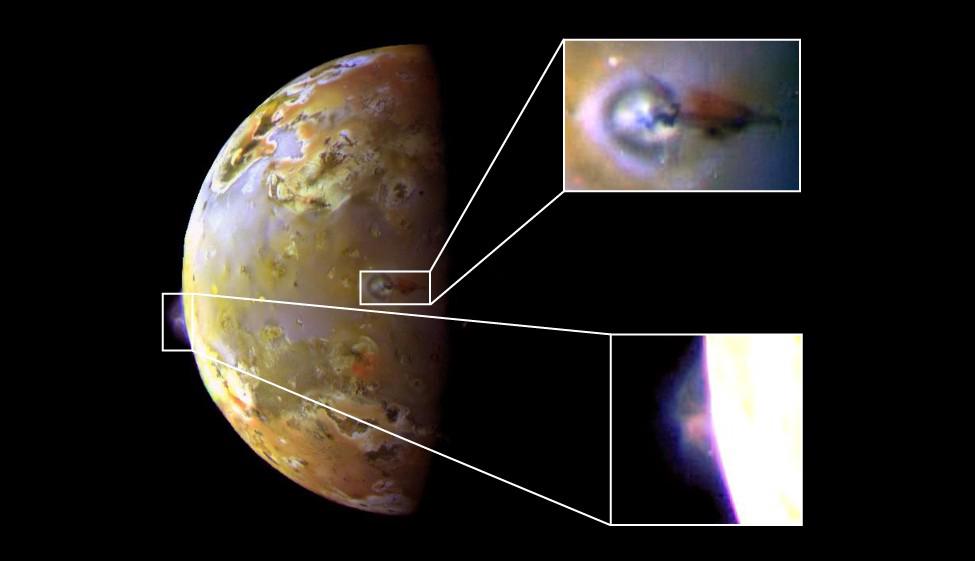Juno's Mission Objectives and Instruments
Juno's mission to Jupiter offers high-stakes science with every orbit, focusing on uncovering the mysteries of Jupiter and its moons, including the volcanic moon Io. The spacecraft brings a suite of cutting-edge instruments, each making significant contributions to our understanding.
JunoCam captures visible-light images that serve as both public engagement tools and scientific resources. The Jovian InfraRed Auroral Mapper (JIRAM) identifies hot spots and volcanic activity on Io, mapping out its geothermal landscape. Juno's Microwave Radiometer (MWR) measures microwave emissions beneath Jupiter's clouds, providing data on water concentrations and ammonia levels.
Gravity Science helps understand mass distribution within Jupiter by tracking Juno's radio signals. The Magnetometer (MAG) maps Jupiter's magnetic field in detail, crucial for understanding phenomena like auroras produced by Io's interactions with Jupiter's magnetosphere.
- Jupiter Energetic-particle Detector Instrument (JEDI): Observes high-energy particles around Jupiter
- Jovian Auroral Distributions Experiment (JADE): Explores lower-energy particle environments
Together, they offer a comprehensive view of how Io influences Jovian space weather.
Juno's Orbit Determination technologies enable careful planning of each flyby, ensuring close-but-safe encounters with Io and allowing for detailed observations of temporal changes in its volcanic activity.
JIRAM: The Volcano Spotter
The Jovian InfraRed Auroral Mapper (JIRAM) has proven instrumental in identifying volcanic activity on Io, despite being initially designed to scan Jupiter's polar auroras. JIRAM functions as a precision heat detector, utilizing infrared sensors to capture thermal emissions from Io's surface.
When observing Io, JIRAM creates detailed heat maps that highlight temperature variations across the moon's landscape. This capability has been crucial in capturing images of features like Loki Patera, a 125-mile-wide volcanic depression. By pinpointing areas where lava is surfacing and cooling, JIRAM helps scientists understand Io's internal dynamics and geothermal processes.
JIRAM's Key Functions:
- Heat detection and mapping
- Analysis of volcanic emission composition
- Capturing rapid sequences of volcanic events
Beyond simple heat detection, JIRAM analyzes the composition of Io's volcanic emissions by measuring thermal spectra. This provides insights into the materials being ejected during eruptions. The instrument's high frame rate also allows it to capture rapid sequences of volcanic events as they unfold.
JIRAM's observations contribute to models simulating Io's internal structure and volcanic mechanics. By integrating thermal data with gravitational and magnetic observations, scientists create more accurate models explaining Io's intense volcanic activity.
The instrument's adaptability in studying Io demonstrates how flexible technologies can yield unexpected scientific discoveries, enhancing our understanding of moon geology in our solar system.

Io's Volcanic Activity and Tidal Forces
Io's intense volcanic activity results from a gravitational tug-of-war with Jupiter and nearby moons Europa and Ganymede. This celestial dance creates complex tidal forces that continuously squeeze and stretch Io's interior, generating immense heat through friction.1
Juno's instruments provide valuable data to understand these processes:
- Microwave Radiometer (MWR): Measures thermal emissions from Io's interior, revealing the energy dispersed by volcanic activity.
- JIRAM: Thermal imaging capabilities show the diversity and scale of Io's eruptions.
- JunoCam: Provides high-resolution visual maps of the volcanic landscape.
- Gravity Science: Scrutinizes subtle wobbles in Io's orbit, providing indirect evidence of magma chambers beneath the surface.
- Magnetometer (MAG): Examines electromagnetic interactions between Io and Jupiter, offering insight into how volcanic activity influences Jupiter's magnetic environment.
JEDI and JADE detect energetic particles and auroral energies, completing the picture of how Io's geological activity extends into its space environment and affects the larger Jovian system.
"With each orbit and close flyby, Juno's instruments work in concert to reveal the profound impact of tidal forces on Io's volcanic activity, continually reshaping our understanding of this fiery moon and its intricate relationship with Jupiter."
Recent observations have shown that Io experiences surface deformations of up to 100 meters due to these tidal forces, significantly higher than previously thought.2 This finding underscores the moon's extreme geological dynamism and its unique place in our solar system.

Data Collection and Analysis Techniques
Juno employs sophisticated data collection methods to understand the dynamics between Jupiter and Io. Using flybys, remote sensing, and in situ measurements, Juno gathers comprehensive data that is processed, analyzed, and shared with the scientific community.
Flybys involve precise aerospace choreography, bringing Juno within a few thousand miles of Io's surface. These close encounters provide high-resolution data and detailed observations of Io's volcanic features.
Remote sensing instruments include:
- JunoCam: Captures visual evidence of Io's changing landscape
- JIRAM: Reveals hidden heat sources through thermal imaging
In situ measurements are conducted by instruments such as:
- Magnetometer (MAG)
- Jovian Energetic-particle Detector Instrument (JEDI)
- Jovian Auroral Distributions Experiment (JADE)
These tools study the magnetic fields and energetic particles surrounding Io, providing data about its interaction with Jupiter's magnetosphere.
The collected data undergoes rigorous processing and analysis. Raw data is cleaned and calibrated to ensure accuracy and remove potential errors. Advanced modeling software then interprets this data, applying mathematical models to understand volcanic features, magma movements, and predict future geothermal activities.
Gravitational measurements from the Gravity Science instrument help to infer Io's internal structure, providing a three-dimensional understanding of how tidal forces affect its geological framework.
Scientists analyze the processed data, often cross-referencing with existing information from previous missions or other telescopes. This analysis helps verify findings, spot patterns, and identify anomalies for further study.
Juno's mission also involves collaboration with citizen scientists. Raw data is made publicly available, inviting enthusiasts to process, analyze, and potentially make new discoveries. These contributions often bring fresh perspectives and innovative techniques to the scientific discourse.
Findings are shared with the broader scientific community through peer-reviewed publications, conference presentations, and collaborative projects. This transparency ensures that Juno's data serves as a global resource for advancing our understanding of the solar system.
Collaborative Efforts with Other Missions and Telescopes
Juno's exploration of Io is enhanced through collaboration with other space missions and telescopes. This cooperation provides a comprehensive understanding of Io and the Jovian system by leveraging the unique capabilities of diverse instruments.
Key collaborators include:
- Hubble Space Telescope (HST): Offers a complementary perspective to Juno's close-up explorations, monitoring Io from a distance.
- James Webb Space Telescope (JWST): Contributes advanced infrared capabilities, examining deeper infrared wavelengths than Juno's JIRAM instrument.
- JUICE (JUpiter ICy moons Explorer): Upcoming ESA mission that will add another layer of investigation into the Jovian system.
- Europa Clipper: NASA mission focused on Europa's potential habitability, providing insights into moon-magnetosphere interactions.
Ground-based observatories contribute to long-term monitoring of the Jovian system, capturing detailed images and spectra of Io. These observations bridge the intervals between spacecraft flybys and often catch transient phenomena that might otherwise go unnoticed.
"Amateur astronomers play a crucial role, providing supplementary observations that help validate and enhance data collected by professional instruments."
This collaborative framework maximizes scientific return and informs the design and objectives of future missions. By harnessing the strengths of multiple missions and telescopes, scientists create a richer and more detailed understanding of Io and Jupiter's system, continuously expanding the frontier of our cosmic understanding.

Juno's mission to Jupiter and Io demonstrates the power of advanced technology in expanding our cosmic knowledge. By utilizing a suite of sophisticated instruments and collaborating with other missions and telescopes, Juno provides a multi-faceted understanding of these celestial bodies. This collective effort exemplifies how modern space exploration continually pushes the boundaries of our understanding, unraveling the mysteries of our solar system one discovery at a time.
![]()